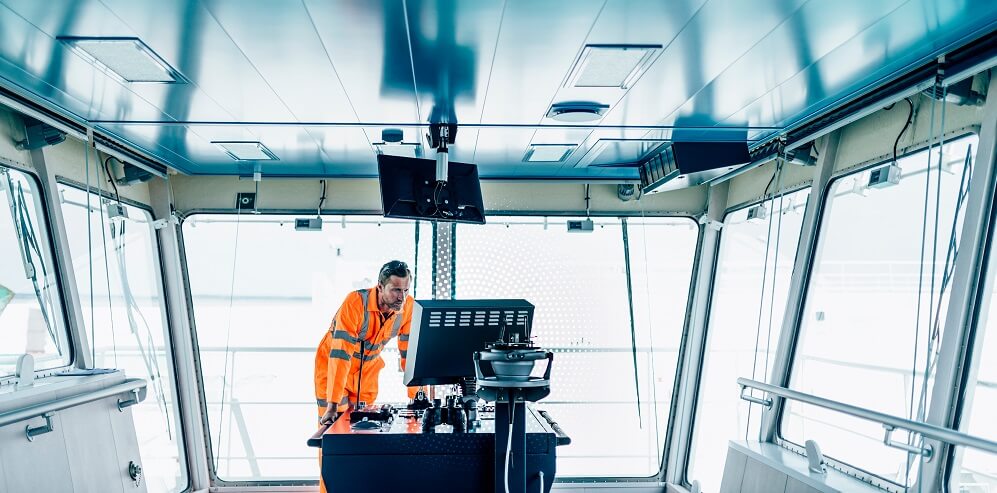Furthering Digital Transformation With Reliable Satellite Connectivity

The pace of digital transformation in the maritime industry continues to accelerate. Fleet owners and operators have embraced technology to better manage and cope with new climate regulations, evolving safety standards, supply chain disruptions, labor shortages, and the unrelenting demand for goods requiring transport by sea. Across all industry segments, mariners are incorporating a host of digital tools, solutions, and applications into the day-to-day operating rhythms of their respective businesses to optimize operations, minimize disruption, gain a competitive advantage, and comply with the steady stream of emerging safety and environmental regulations.
The breadth of digital applications purpose-built for the maritime industry continues to expand. In the areas of predictive and preventive maintenance, vessel owners are now able to monitor the condition and performance of their fleets and respond more quickly at the first hint of an issue. This is particularly critical for owners of aging fleets not equipped with the latest technology as new and more modern vessels, which are therefore at higher risk for mechanical problems.
Today’s applications can identify unusual vibrations or mechanical malfunctions and flag minor issues before they become major problems that require emergency rerouting for repairs, or a vessel being disabled entirely. In some cases, onboard ship personnel can even use 3D printers to create replacement parts to avoid the need for an unscheduled stop.
Digital technologies are also enabling operators to cope with growing demand and comply with evolving climate mandates. The global supply chain, still working to recover following the tumultuous impacts of the pandemic, is heavily reliant on maritime shipping. Today, 80–90 percent of the world’s goods are transported by ships that use approximately 300 million metric tons of fuel each year. Merchant vessels account for 3 percent of the world’s total carbon dioxide emissions. Operators are turning to digital tools to optimize routes and fuel consumption, reduce costs and meet environmental standards.
At the same time, these same applications connect siloed data and information systems to enhance orchestration across the supply chain and improve tracking of assets and goods-in-transit. Enhancing the data transfer capabilities between ship and shore helps to reduce or eliminate supply chain bottlenecks and expedite cargo transfer and offloading times.
In the critical area of crew welfare, digitization is helping to combat the high turnover rates and challenges of attracting labor that is pervasive across all segments of the maritime industry. Crews at sea not only want to remain connected with friends and loved ones on shore, they also want access to the same high-quality digital experiences and entertainment options they have become accustomed to on land. A 2018 Crew Connectivity survey found that the availability of Wi-Fi was a major factor for 92 percent of respondents in determining where to work. Furthermore, digitization enhances the health and safety of crew members by enabling telemedicine applications that can connect ship doctors to the broader medical ecosystem in the event of a medical emergency.
These are just some examples of how digitization is transforming the maritime industry. But no matter the application or use case, the ability for any digital solution to function as intended is dependent on the presence of ubiquitous connectivity. It must be robust, it must be reliable, and it must be available anywhere in the world a ship might journey.
Satellite networks have long played a critical role in providing communications at sea for navigation and safety. As fleet owners and operators increase reliance on mission-critical applications and begin to leverage artificial intelligence, IoT, advanced cloud technologies, edge computing, and automation to advance operational efficiencies further, the requirement for satellite networks to meet burgeoning demands for bandwidth and support dramatic increases in data traffic is bound to grow exponentially.
As the operator of the world’s largest satellite network, Intelsat delivers the reliable, always-available connectivity required for today’s connected maritime industry. FlexMaritime, Intelsat’s fully managed connectivity solution, is built to meet specific industry needs offering the speeds and capacity to support the bandwidth demands of ship owners. Featuring high-throughput satellites and a multi-layered structure, FlexMaritime is available anywhere in the world, with significantly expanded coverage over North America, the Gulf of Mexico, and the Caribbean Sea as a result of the successful launch of the Intelsat 40e satellite.
Configurable to meet the unique requirements of each industry segment, FlexMaritime removes the complexity of managing connectivity by offering a range of flexible solutions for technologies of today, while scalable to support the emergence of future solutions. Through the introduction of software-defined capabilities and deployment of its multi-orbit strategy, where traffic is dynamically routed using satellites operating in both geostationary and low earth orbit bands, Intelsat’s advanced and modernized network ensures that ship-to-shore data traffic will be transmitted in the fastest, best, and most cost-effective way for ship owners.
The digitized maritime industry continues to evolve. Vessels are becoming increasingly more connected. Communications infrastructure, such as electronically steered antennae, are directly embedded into new vessel construction. The availability of reliable and powerful connectivity will only become more critical in the years ahead. FlexMaritime allows fleet owners and operators to maximize investment, meet the demands of customers, and realize operational efficiencies and cost savings by leveraging a globally unified satellite network capable of delivering secure, trusted, robust connectivity at all times and anywhere in the world.
For more information on FlexMaritime, please visit https://www.intelsat.com/solutions/maritime/maritime-connectivity-solutions/.
The opinions expressed herein are the author's and not necessarily those of The Maritime Executive.

